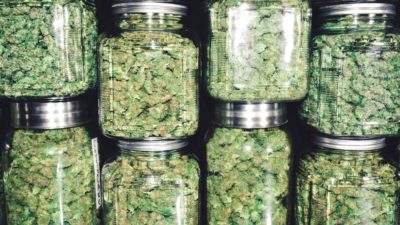With a dividend yield approaching 7%, it is easy to understand the popularity of Canadian oil giant Crescent Point Energy (TSX: CPG)(NYSE: CPG) among dividend investors.
Not only has it been consistently paying a dividend since mid-2003, but dividends are paid monthly. These regular payments give income focused investors a far smoother income stream than quarterly dividend payments.
However, this high dividend puts Crescent Point under the spotlight, with a number of pundits questioning the sustainability of the dividend. So let’s take a closer look at how the dividend works and determine whether it truly is sustainable.
How is the sustainability of dividends measured?
Typically, a dividend’s sustainability is determined by a company’s dividend payout ratio, which is the total dividend paid divided by net income. Any amount exceeding 100% is considered unsustainable, with more dividends being paid than net income received.
For the full-year ending 31 December 2013, Crescent Point reported net income of $0.38 per share and a total annual dividend paid of $2.76 per share. This on first glance gives a payout ratio of 726%, which is clearly unsustainable.
However not all dividends are created equal. There are different ways of calculating the sustainability of a dividend and while total dividends paid divided by net income may be the most popular, it is not the most accurate. In the world of oil exploration and production, cash is king. Accordingly, the most accurate means of calculating whether a dividend is sustainable is to simply replace net income with cash flow from operations.
This is a more accurate measure of a company’s ability to pay dividends, because the formula for calculating net income includes a number of non-cash items. These non-cash items include depreciation and amortization as well as stock-based compensation, which affects net income, but does not represent actual cash earned or paid out. Cash flow from operations only represents the actual cash earned and paid out by the company.
When using this method, Crescent Point’s 2013 dividend pay-out ratio drops to a very sustainable 54%. This payout ratio is further reduced by Crescent Point paying a portion of its total dividends paid in the form of shares, through its dividend reinvestment plan.
For the full year 2013, a total of almost $1.1 billion was paid out in dividends to investors, with almost $659 million or 61% being received in the form of additional shares. This further reduces the 2013 payout ratio when using this methodology, to a very sustainable 22%.
Is the dividend reinvestment plan diluting existing shareholders?
This brings me to the second commonly raised criticism regarding Crescent Point’s dividend. The use of a DRIP to lower the payout ratio is diluting existing shareholders because a DRIP incrementally dilutes the value of non-participating shareholders by increasing the total float of shares outstanding.
For the full-year ending 31 December 2013, Crescent Point paid out $659 million of dividends in the form of shares, with 18,246,133 common shares issued through the DRIP. This represents 4.9% of the total share float outstanding at the start of 2013.
On face value this may not appear to be significant amount — it’s less than 5% of the total float — and accordingly shouldn’t materially dilute existing shareholders. However, in 2011 Crescent Point issued 3.9% of its float in the form of shares through the DRIP and 4.6% in 2012. The combined effect is to incrementally dilute those shareholders who have elected to not participate in the DRIP and take their dividends as cash.
As long as Crescent Point is capable of growing its core profitability and cash flows, the value of its shares, despite this incremental dilution, should continue to appreciate.
For the last consecutive five years, Crescent Point’s revenue and operational cash flow have continued to grow annually, with extremely healthy compound annual growth rates of 29% and 25% respectively.
Furthermore, the strength of Crescent Point’s operations are underscored by cash flow in 2013 alone growing by a robust 28% year-over-year and a solid 49% compared to 2011. Crescent Point ended 2013 with a $16 million increase in cash on hand.
With 2014 production forecast to exceed 2013 production by 5% coupled with firmer crude prices, Crescent Point is well positioned to continue growing shareholders value and boost operational cash flow. This bodes well for the sustainability of the dividend particularly with the dividend payment remaining unchanged at $0.23 monthly.
Foolish bottom line
Despite the naysayers it is apparent Crescent Point’s monster dividend yield is sustainable. However, what is concerning is the incremental dilutive impact the DRIP is having on non-participating shareholders. This makes Crescent Point a desirable investment from the perspective of its yield but not one for income hungry investors seeking a regular source of income.







